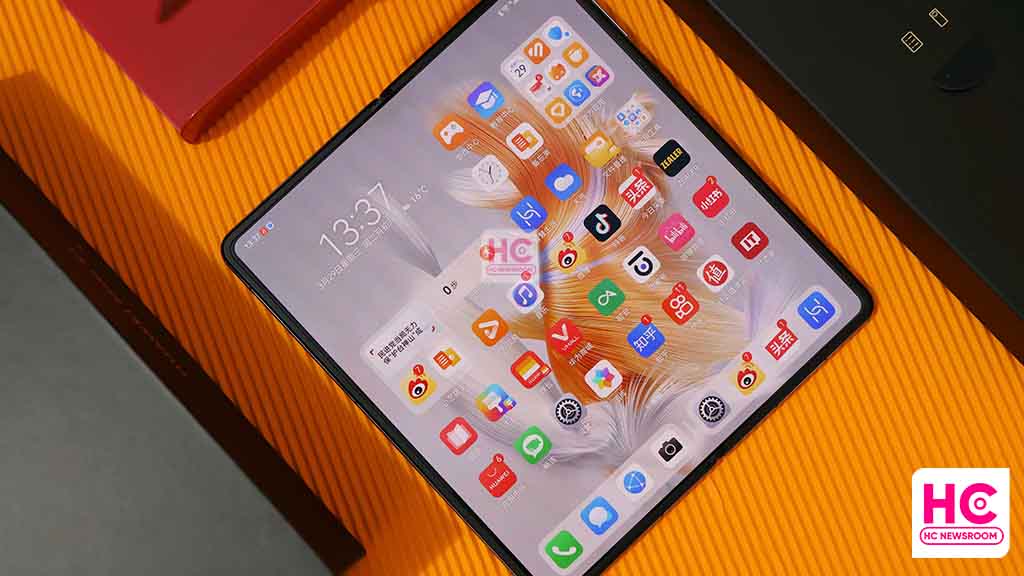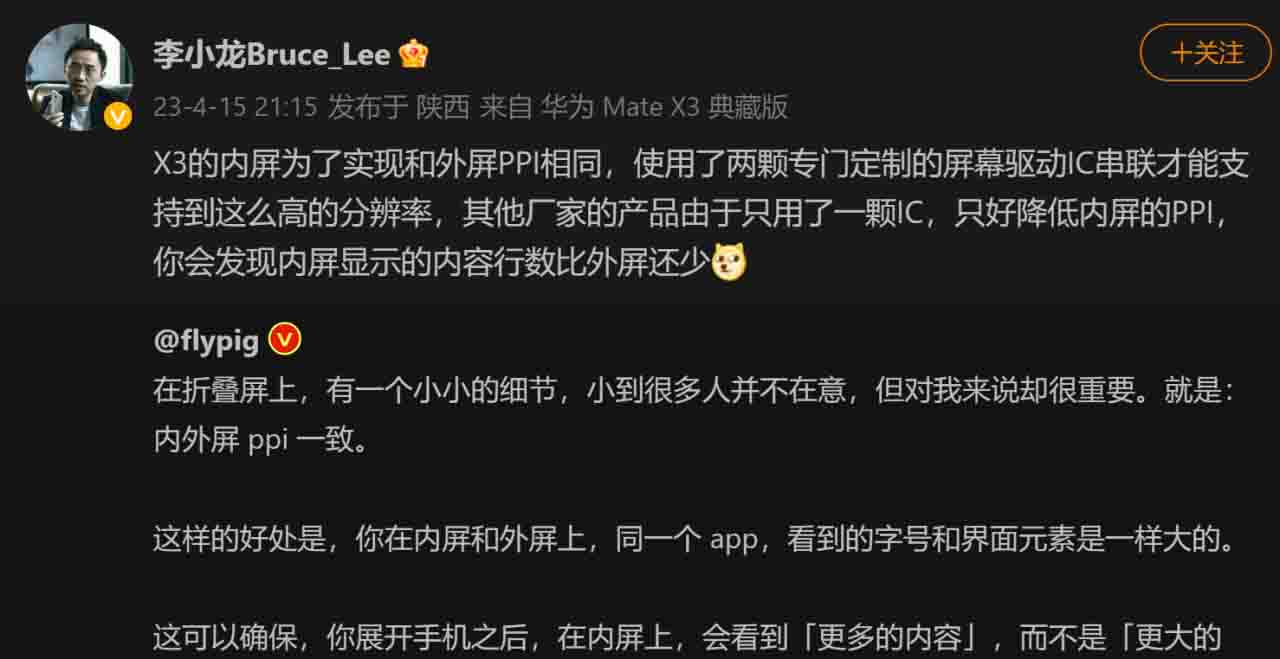Phones
Here’s how Huawei Mate X3 won over Samsung Galaxy Fold 4 in pixel density

Huawei Mate X3 is already announced as the most innovative foldable phone and it also registers a win over the competitor Samsung Galaxy Z Fold 4 in terms of screen pixel density.
A few days ago, Huawei Devices Business Group CTO Burce Lee replied to a Weibo user who wrote an article about “the PPI of the inner and outer screens is the same. elements are the same size”.
Bruce Lee said in order to achieve the same PPI as the cover screen, the main display of Huawei Mate X3 uses two specially customized screen driver ICs connected in series to support such a high resolution.
Since other foldable smartphone uses only one IC, they are bound to reduce the PPI of the main screen. Therefore, you will find that the number of lines of the content displayed on the main screen is reduced as compared to the cover screen.
Display specifications:
Looking at the specifics, we should know that the Huawei Mate X3 delivers 426 PPI and Samsung Galaxy Z Fold 4 has 373 PPI.
In terms of resolution, the Samsung Galaxy Z Fold 4 equips a 7.6-inch main display (2176 x 1812 pixels) and a 6.2 cover screen with 2316 x 904 pixels resolution.
Even with a large screen at 7.85 inches, Huawei stands supreme in resolution (2496 x 2224 pixels) for the main screen. While the cover display reaches 6.4 inches with a 2504 x 1080 pixels resolution.
What is pixel density:
Pixel density is a calculation that returns the number of physical pixels per inch on a screen or display of a device. It’s often referred to as Pixels Per Inch or PPI.
Increased PPI can improve the quality of the viewing experience. Even when held closely, high PPI screens do not look pixelated (assuming that the image is of high enough quality, to begin with).
Here, Huawei Mate X3 shows that Samsung Galaxy Z Fold 4 should have tried to be innovative also in terms of pixel density, while not relying on its Android dominance.







